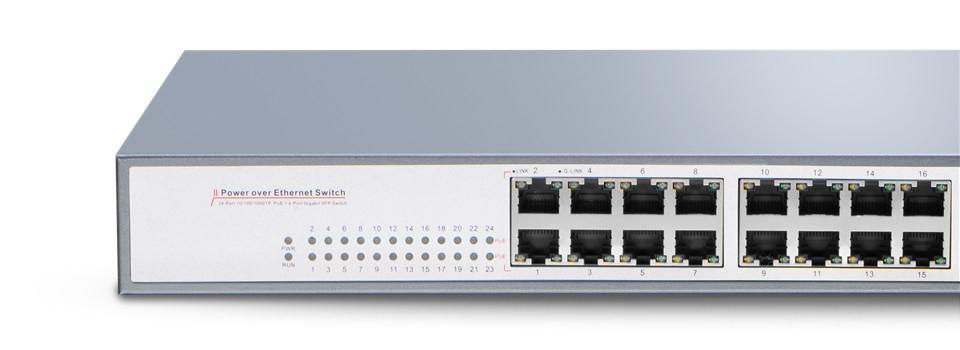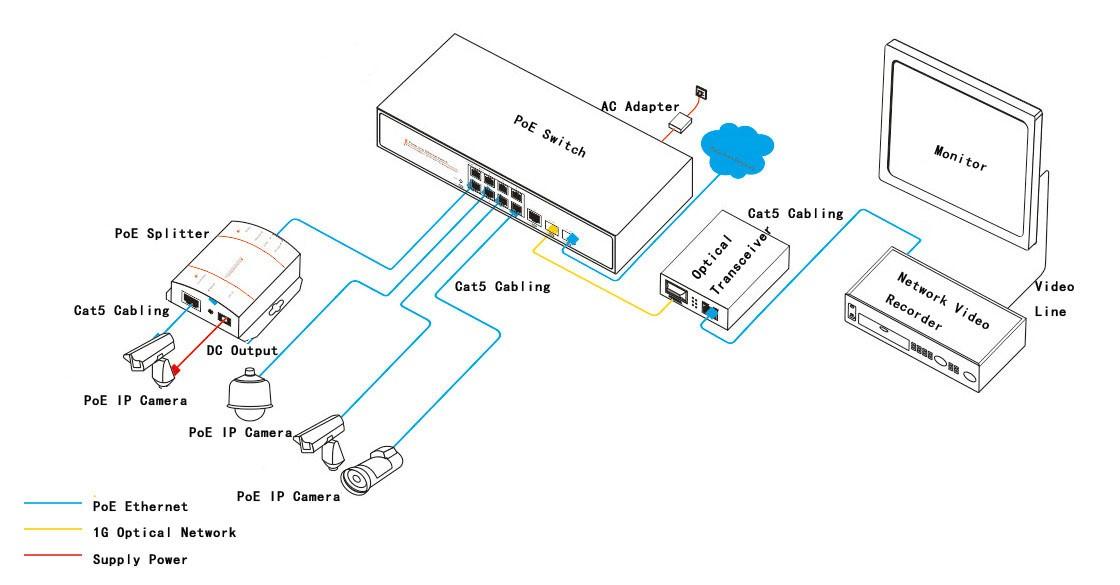- Related articles
- Optical Transceivers for Cisco SPS224G4-G5 Switch
- All Cisco GLC-SX-MMD's information (List price,Specs, Datasheet PDF, Compatibility matrix)
- All Cisco GLC-BX-U's information (List price, Specs, Datasheet PDF, Compatibility matrix)
- All Cisco GBIC-BX-D's information (Specs, Datasheet PDF, Compatibility matrix)
- What is PCI Wireless Ethernet Adapter?
- All Cisco GLC-FE-100LX-RGD’s Information (Overview, Features, Datasheet PDF, Price, Specif
- All Cisco QSFP-40G-SR4’s Information (Overview, Features, Datasheet PDF, Price, Specificat
- All Cisco GLC-FE-100BX-D's information (List price, Specs, Datasheet PDF, Compatibility ma
- All Cisco ONS-SE-ZE-EL's information (List price, Specs, Datasheet PDF, Compatibility matr
- Optical Transceivers for Cisco SRW248G4-K9-EU Switch
Recommend tag

How to use PoE switch to extend the network?
2017-03-30
Power over Ethernet (PoE) technology allows people to use the Ethernet cable to transmit data to the PoE device while also transmit power, thereby reducing the use of power lines. PoE technology is very commonly used in IP camera, wireless AP etc. PoE switch is the essential device for PoE network, this tutorial will describe it in detail.

About PoE switch
PoE switch is a device that transmits data signal and provides power for IP-based terminal devices (such as IP phones, wireless APs, IP cameras, etc.) on the basis of existing Ethernet cabling, it usually configures multiple Ethernet ports, supports output power up of 15.4W or 30W and complys with IEEE802.3af/802.3at standard, eliminates the need for additional power cabling through power is supplied to standard PoE terminal equipment via network cable.
Power supply of PoE switch
Although PoE switch can provide power for IP terminal devices, not all of IP terminal devices are suitable for getting power from PoE switch. PoE switch are usually applied to low power IP devices, while power cable are still required for the large power devices such as computer, printer etc. In addition, different models of PoE switches provide different sizes of power, here we will take PS130W-8and PS250W-8 PoE switch as an example to detailed explain.

The appearance of these two switches are basically same, and both configured two SFP ports and 8 10/100/1000Mbps PoE ports. But the power they supplied are different, the total output power of PS130W-8 PoE switch is 130W, the output power of each PoE port is 15.4W; while the total output power of PS250W-8 PoE switch is 250W, each PoE port is 30W.
Port and Transmission rate of PoE switch
The capacity of PoE switch is determined by its port and transmission rate, the transmission rate of the most of PoE switch on the market can reach 10/100/1000Mbps, in addition, some PoE switch are also configured SFP and SFP+ ports, which can be used for accessing to the optical network. For small-size network, generally use the switch which has 8 PoE ports, and for large-size enterprise network, commonly adopts the switch which has 24 or 48 PoE ports. The following table shows some parameters of some common PoE switch:
|
Parameter |
PS130W-8 |
PS250W-8 |
PS400W-24 |
PS650W-24 |
PS650W-48 |
|
PoE Port |
8 |
8 |
24 |
24 |
48 |
|
SFP Port |
2 |
2 |
4 |
4 |
No |
|
SFP+ Port |
No |
No |
No |
No |
4 |
|
Output Power of PoE port Per PoE Port |
15.4W |
30W |
15.4W |
30W |
30W |
|
Total Output Power |
130W |
250W |
400W |
650W |
650W |

Application Instance of PoE Switch
The use of PoE switches eliminates the process of IP terminal equipment cabling, the overall network comes to be more reliable, and makes the deployment if IP terminal devices become more flexible without reply on direct power. The figure below is an example of a PoE switch used to monitor the system, a PoE switch can supply power for multiple IP cameras that is very convenient to deploy:


TECHNICAL SUPPORT
Get solutions or consultation from the technical team.




































































